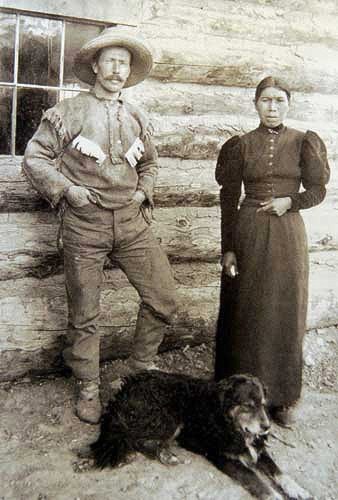In Lytton on July 29, the Nlakap’amux people opened up a treasure trove of songs and stories recorded a century ago on wax cylinders. More than 60 people gathered to take part in The Songs of the Land project, which has been several years in the making.
“This is a huge step for our process but it is only the beginning,” said Kevin Loring, Artistic Director of the Savage Society. “These songs and stories were preserved on wax cylinder recordings so that we could have them today. It is essential the Nlakap’amux people have a say in what is done with them.”
The four-day workshop and symposium, which began on July 29 and runs through Aug. 1, will see Loring and a company of Aboriginal artists consult with the community on the music’s artistic and spiritual importance. They’ll also explore how the material can be adapted for use in a modern piece.
Loring, a Governor General Award-winning playwright, and his company will be joined by Professor Wendy Wickwire of the University of Victoria, the foremost authority on the life of anthropologist James Teit, who recorded the Nlaka’pamux songs and stories a century ago. Originally from the Shetland Islands in the U.K., Teit moved to B.C. in 1884. He married Susanna Lucy Antko, a Nlaka’pamux woman, and became immersed in First Nations culture.
From 1897 until 1921, Teit recorded hundreds of Native songs on wax cylinders. The Edison wax cylinder machine he used was state-of-the-art at the time. The Nlaka’pamux songs and stories he captured give an intimate view of this ancient and vibrant culture. They include a lullaby, a bear song sung to twins, a mourning song, a shaman’s song, and stick-game songs. The main singers were four women: one was Lucy Antko, Teit’s own wife. The fact these women sang sacred and personal songs in the presence of a non-native man is testament to the trust they had in Teit. Much of this work is today part of the collection of the Canadian Museum of Civilization. These cylinders and their accompanying field notes are little known, despite their great value.
In the fall of 2010, New Pathways to Gold Society (NPTGS) Directors Chris O’Connor and Byron Spinks came up with the idea of using the recordings of traditional Nlaka’pamux music made by Teit to create a First Nations performance piece for Aboriginal artists. Kevin Loring was approached, and by spring 2011 had developed a proposal to use his theatre company, Savage Society, to deliver the NPTGS’s vision. He gave the project the working title of The Songs of the Land.
Loring obtained the recordings and digitized them. He also assembled an artistic team and started organizing a community consultation to discuss how best to make use of this treasure trove of Nlaka’pamux songs, stories, prayers, and ceremonies.
The digitally re-mastered music will sound fresh and alive at The Songs of the Land workshop and symposium. Loring and his fellow artists will give a presentation and performance based on their work at a community feast on Aug. 1.
“This is a fabulous project that shows that Aboriginal cultures are not frozen in time, but alive and vibrant and something the whole world can appreciate,” said Cheryl Chapman, NPTGS First Nations Co-Chair.
“There is an incredible diversity of Aboriginal culture to be found on the Gold Rush/Spirit Trails,” said Terry Raymond, NPTGS Co-hair. “It’s one of the corridor’s outstanding heritage tourism assets and something we can build upon to attract visitors from all over the world.”
Barbara Roden
